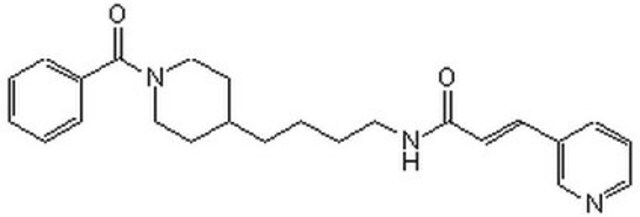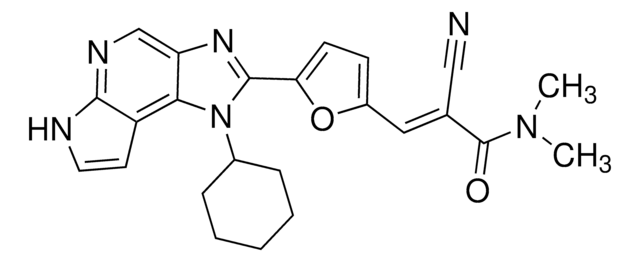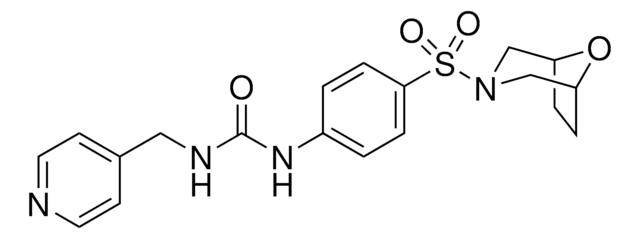D8446
P7C3
≥98% (HPLC)
Synonym(s):
3,6-Dibromo-a-[(phenylamino)methyl]-9H-carbazole-9-ethanol
About This Item
Recommended Products
Assay
≥98% (HPLC)
form
powder
color
white to off-white
solubility
DMSO: 34 mg/mL
storage temp.
2-8°C
SMILES string
OC(CNc1ccccc1)Cn2c3ccc(Br)cc3c4cc(Br)ccc24
InChI
1S/C21H18Br2N2O/c22-14-6-8-20-18(10-14)19-11-15(23)7-9-21(19)25(20)13-17(26)12-24-16-4-2-1-3-5-16/h1-11,17,24,26H,12-13H2
InChI key
FZHHRERIIVOATI-UHFFFAOYSA-N
Application
Biochem/physiol Actions
Degeneration of the hippocampus is an early manifestation of Alzheimer′s disease. P7C3 promotes neurogenesis in the subgranular zone of the hippocampal dentate gyrus, the site of normal neurogenesis in adult mammals, making it an important lead compound in development of new Alzheimer′s treatments.
Signal Word
Danger
Hazard Statements
Precautionary Statements
Hazard Classifications
Acute Tox. 3 Oral - Eye Dam. 1
Storage Class Code
6.1C - Combustible acute toxic Cat.3 / toxic compounds or compounds which causing chronic effects
WGK
WGK 3
Flash Point(F)
Not applicable
Flash Point(C)
Not applicable
Certificates of Analysis (COA)
Search for Certificates of Analysis (COA) by entering the products Lot/Batch Number. Lot and Batch Numbers can be found on a product’s label following the words ‘Lot’ or ‘Batch’.
Already Own This Product?
Find documentation for the products that you have recently purchased in the Document Library.
Our team of scientists has experience in all areas of research including Life Science, Material Science, Chemical Synthesis, Chromatography, Analytical and many others.
Contact Technical Service










